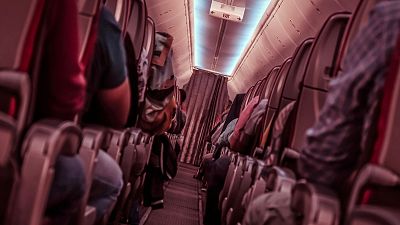How will the climate crisis change travel?

The COVID-19 pandemic has ground the aviation industry to a halt over the last year and a half. Airline emissions were unprecedentedly low throughout this period and are only just starting to rise again as international travel resumes.
But the nature of travel is changing, and this time it’s as a result of climate change. From increased turbulence to frequent flyer taxes, what is in the store for airline passengers as the climate crisis gets worse?
Turbulence could get worse on flights. ‘Head-slamming’ turbulence is steadily increasing on flights, according to the National Transportation Safety Board (NTSB) in the US.
Over 65 per cent of severe injuries logged by US accident investigators from 2017 to 2020 on planes resulted from turbulence, triggered by atmospheric conditions that could be worsening due to climate change.
“Turbulence is the most common airline accident type today and it’s high time we reduce turbulence-related injuries,” says NTSB acting Chairman Bruce Landsberg.
Because they have to be on their feet for longer than passengers, flight attendants are the most vulnerable – in fact, they are 24 times more likely to be seriously injured.
They’ve been “slammed off ceilings, walls and floors, suffering broken vertebrae and other fractured bones as well as head injuries”, according to NTSB accident reports.
They’ve been slammed off ceilings, walls and floors, suffering broken vertebrae and other fractured bones as well as head injuries.
The problem has been exacerbated by insufficient weather reporting and outdated guidance to airlines.
You can also experience ‘clear air turbulence’, according to Dr. Paul Williams, a professor of atmospheric science at the University of Reading.
In 2019 Williams told CBC, “Flying through a cloud, when at least you can see it, you know it’s there and you’re going to expect some turbulence in the next few minutes.
“But clear air turbulence is generated by instabilities in the jet stream because of very rapidly moving air currents at 35,000 feet. The wind speed increases with altitude.”
If the wind is too strong, says Dr. Williams, then “the atmosphere just can’t contain the stresses and strains. It becomes unstable and breaks down.”
“Because of our CO2 emissions, it’s modifying the jet stream and just increasing those instabilities,” he concludes.
More flights could be delayed due to extreme weather
Imagine boarding a flight only to be told that the airline needs a dozen passengers to get off because it’s too hot outside for the plane to take off fully loaded.
This could become a common experience for passengers at the world’s 19 major airports as extreme heatwaves get worse, according to a study by Columbia University in the US.
“As air temperatures rise at constant pressure, air density declines, resulting in less lift generation by an aircraft wing at a given airspeed and potentially imposing a weight restriction on departing aircraft,” the study details.
And it’s not just the heat that is starting to cause delays – storms and extreme weather are also a problem. Just this month, one airline passenger wrote about her experience of violent storms in Texas.
People had waited in American Airlines queues for hours trying to get rebooked on a different flight, or to get a refund.
“Uncharacteristic tornadoes and severe thunderstorms had wracked the northern part of the state, grounding hundreds of planes and causing hundreds of others to be diverted,” writes Elizabeth Blackstock in transport publication Jalopnik.
“People had waited in American Airlines queues for hours trying to get rebooked on a different flight, or to get a refund, or to be directed to a hotel, or to just get a coupon for a compensated snack.”
Maeve Campbell www.euronews.com
